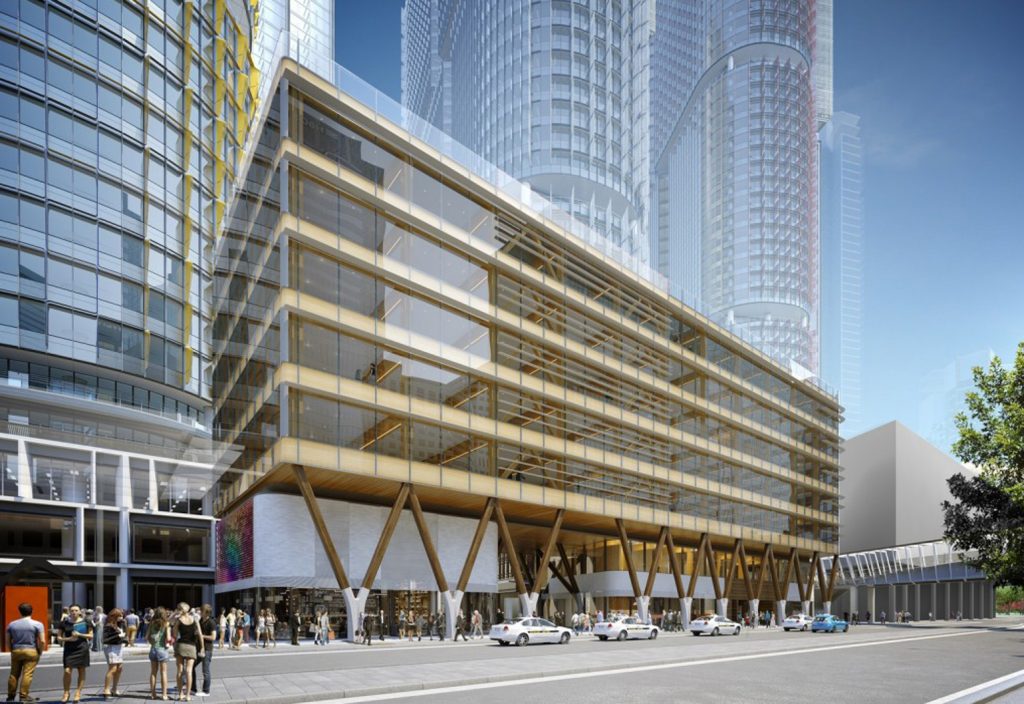Thanks to innovative construction materials like cross laminated timber (CLT) and laminated veneer lumber (LVL), wooden buildings are no longer mere houses made of sticks.
Attracted by the aesthetic and environmental benefits of timber, structural engineers have overseen a lumber comeback, from Lendlease’s International House development in Sydney’s Barangaroo district to Brisbane’s newly completed 25 King, which is the world’s tallest commercial timber building.
But with ambitious projects in Tokyo, Chicago, and London eyeing far greater heights for timber as a building material, engineers and the public need to be assured wood can match up with concrete and steel when it comes to safety and stability.
That’s why Griffith University’s Associate Professor Benoit Gilbert has been putting timber to the test, using high-tech machinery to better understand how timber behaves in a variety of situations.
Filling in the blanks
Gilbert’s current tests focus on progressive collapse, a term that describes the severe failure of a structure due to something going wrong in one part of it. That could be a gas explosion, a fire or if a car were to collide with the building.
“Progressive collapse is very, very rare,” Gilbert told create.
“It doesn’t happen a lot, but when it happens, it’s very catastrophic, so you need to consider it in some designs.”
He said progressive collapse has been well studied for concrete and steel buildings, but not for tall timber buildings.
“We’re trying to understand what happens if you’ve got any car accidents or if you’ve got anything happening, and you’re losing one of the main columns.”
This particular test focused on a system consisting of beams, columns and a CLT panel, though Gilbert plans to conduct future tests using different configurations. The ultimate goal, once the data has been processed, is to produce design guidelines that can account for progressive collapse of timber, something that already exists for concrete and steel buildings.
“For concrete you need to get some continuous reinforcements for the columns,” Gilbert said.
“We’re trying to develop some guidelines [for timber] — to say to the designer, when you design for progressive collapse, this is what you need to take into account, and this is what you need to design for.”
Along with Gilbert, the team working on the project includes Professor Hong Guan, Dr Gunalan Shanmuganathan, Dr Hassan Karampour, Dr Ian Underhill, and PhD students Chunhao (Alan) Lyu, Mahyar Masaeli and Xinyi (Chelsea) Cheng.
According to Lendlease Senior Structure Engineer Richard Neuhercz, testing robustness is very important with multi-story buildings.
“Testing will help illustrate the way this works — we can learn a lot from these tests, which will help inform and support decisions,” he said in a media release.
Weighing the pros and cons
At this early stage, the results look promising.
“The tests show that the timber buildings have got quite a large capacity to resist progressive collapse, though load passes are designed from concrete and steel,” Gilbert said.
“We need to analyse that further, because we ran the tests [recently], so we still haven’t really processed the data. But the capacity was pretty high.”
Working with timber is different to working with other products. For a start, timber is more brittle than steel or concrete, though Gilbert hopes to address that.
“We’re trying to make that behaviour a bit more ductile, similar to what we see in steel and concrete, to be able to actually get a big of warning when the failure will happen, if it has to happen,” he said.
“They’ve all got different behaviour … you need to understand the behaviour of timber so you can design for timber.”
Because timber has advantages, too.
“It’s very sustainable. With timber, if you cut a tree, you can plant another one that’s going to grow, so it’s very renewable,” Gilbert said.
“It’s beautiful too; it’s got a very warm feeling. It can store carbon. It’s got a lot of benefits in terms of environmentally friendly benefits, in terms of aesthetic, how pleasing is the feeling in the buildings — and it’s probably one of the solutions, in my opinion, to get to a more sustainable world.”

